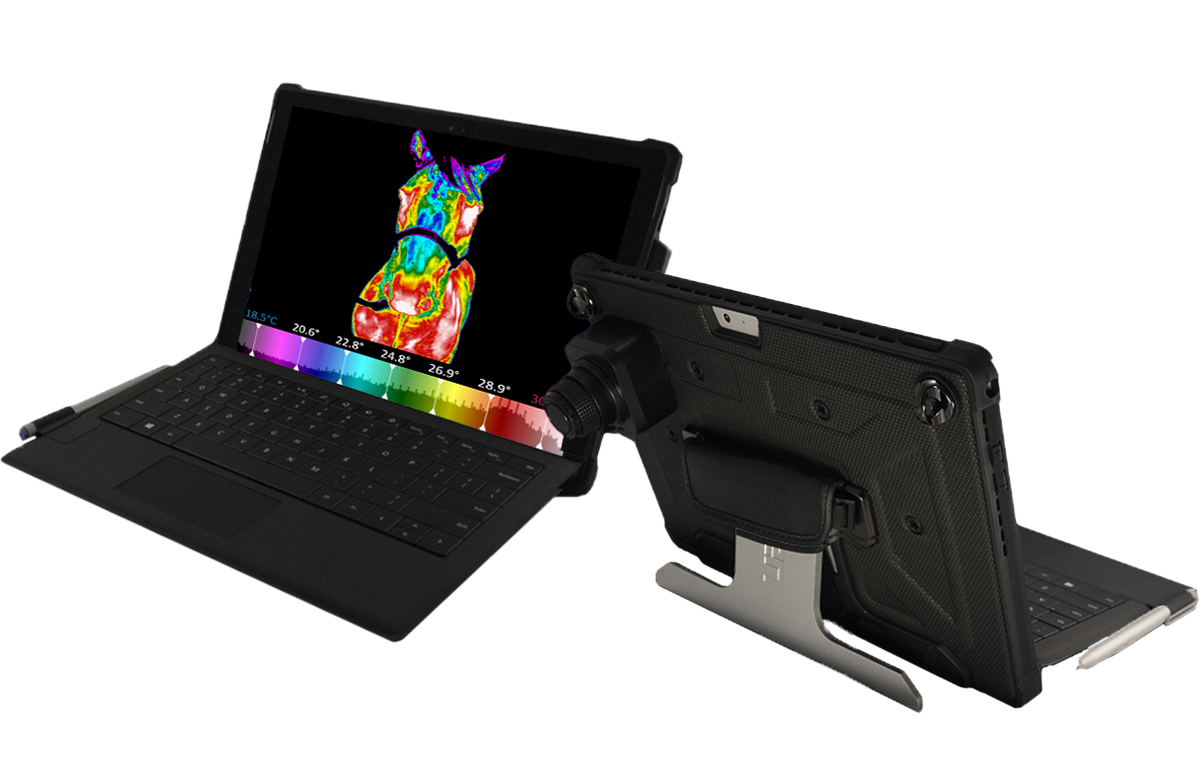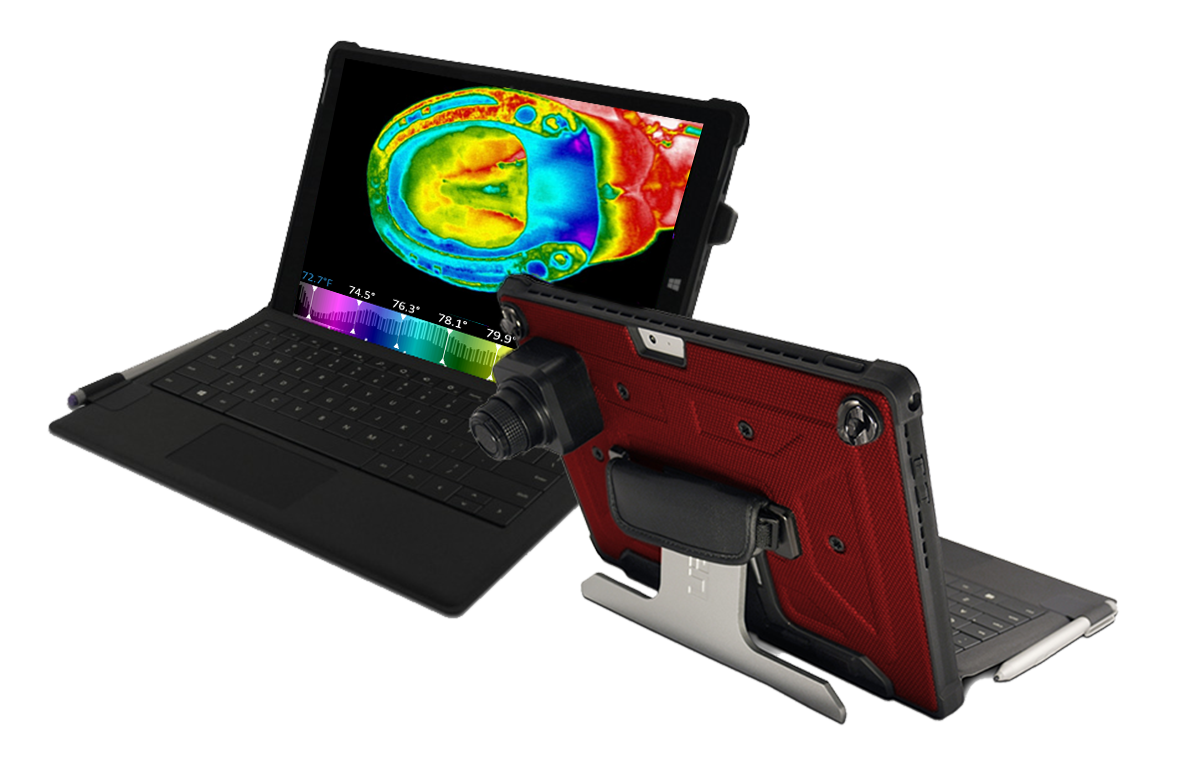Thermal imaging is commonly used in equine practices to visualize problems that are imperceptible to the eye and sometimes difficult to find with a physical examination alone. Thermal images provide real-time information about the circulatory, musculoskeletal, and nervous system health of your equine patients.


2 Notice the thermal asymmetry?



Thermography in Equine Practice
When performing a thermal screening it’s important to first understand normal physiology. A healthy horse with normal blood flow results in symmetrical surface temperatures. Abnormalities present as asymmetrical temperature screenings.
- Increased Temperatures: Hyperthermia indicates increased blood flow. This can indicate inflammation, infection, or malignancy.
- Decreased Temperatures: Hypothermia indicates decreased blood flow. This can indicate the presence of a neurological condition resulting in localized vasoconstriction.
Medically calibrated veterinary-specific software converts these temperature changes into a visual image. This provides the physiological status of the patient in real time.

1 The support bandage was removed only one hour prior to the exam.




Clinical Applications for Equine Thermal Exams
- Physical Exams
Use WellVu for early detection of areas that would benefit from further evaluation and possibly diagnostic procedures. - Lameness Evaluations
Use WellVu as the initial first-line examination tool to ensure a thorough exam of the entire horse. Thermal images are easy to take and can be intuitively interpreted. Thermal images can also reveal secondary areas of concern that are often overlooked. Visualization of these images increases owner compliance with additional diagnostics. When utilized with ultrasonography, radiography, or nuclear scientigraphy, thermal imaging will often shorten the path to a definitive diagnosis. - Treatment Assessment
Use WellVu to objectively monitor progress during any treatment regimen. Treatment of equine patients is always fluid, and thermal imaging allows for quantitative assessment, which results in a shorter recovery time. WellVu will validate when complete healing has been achieved to determine when an equine patient is ready to return to work, sport, or recreational activity. - The Ultimate Client Education Tool
Visualization and reinforcement of your findings allow the client to understand and be compliant with your treatment and therapeutic goals.
WellVu Thermal Cameras

WellVu 640


